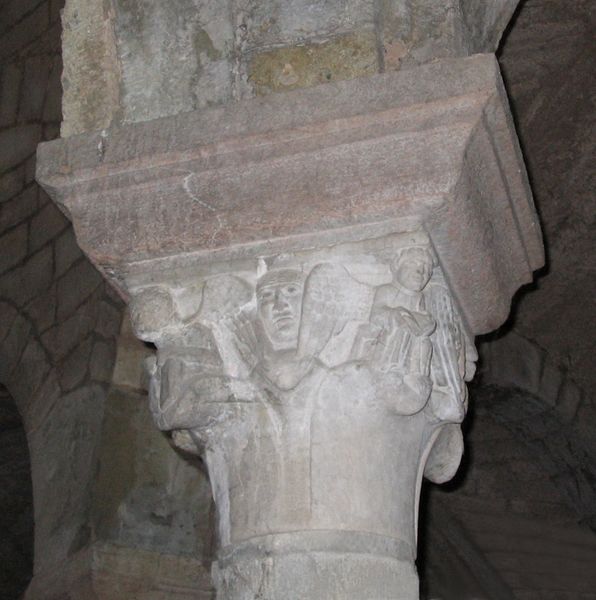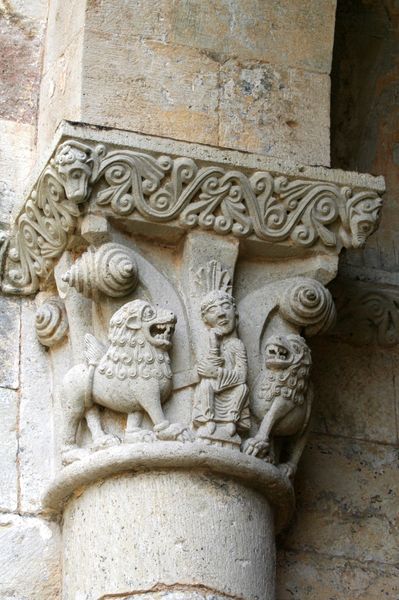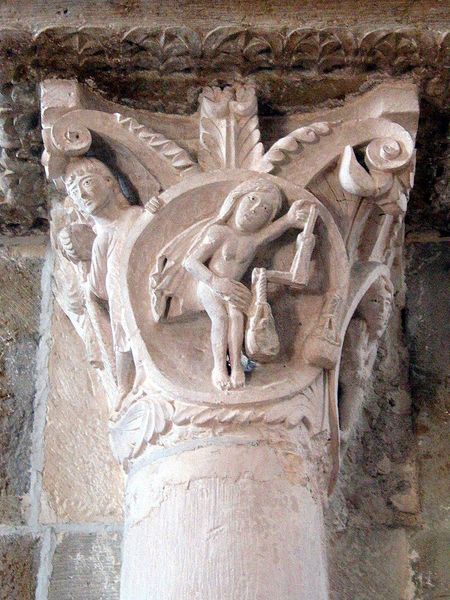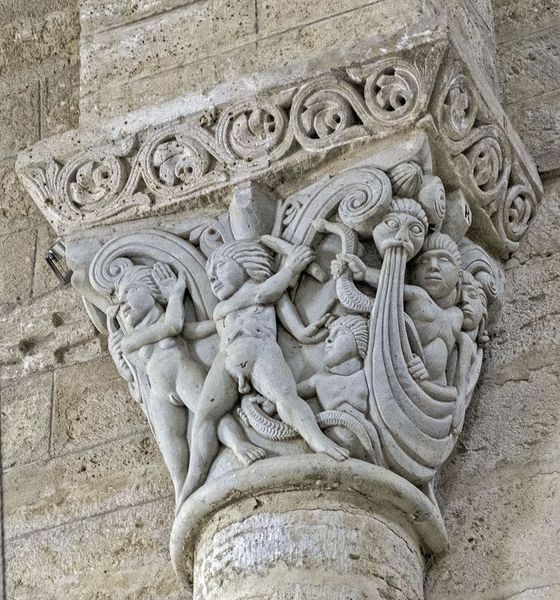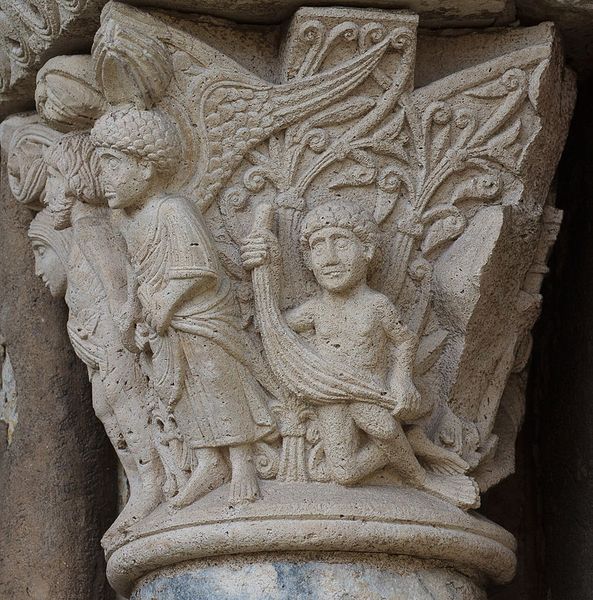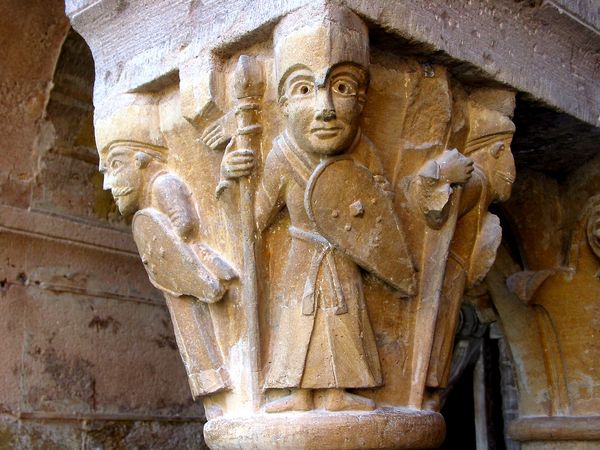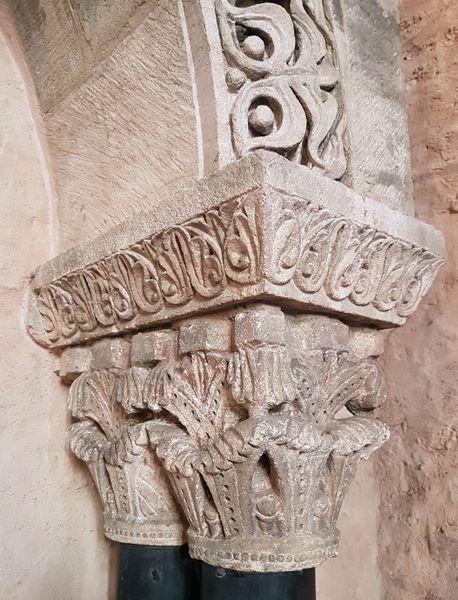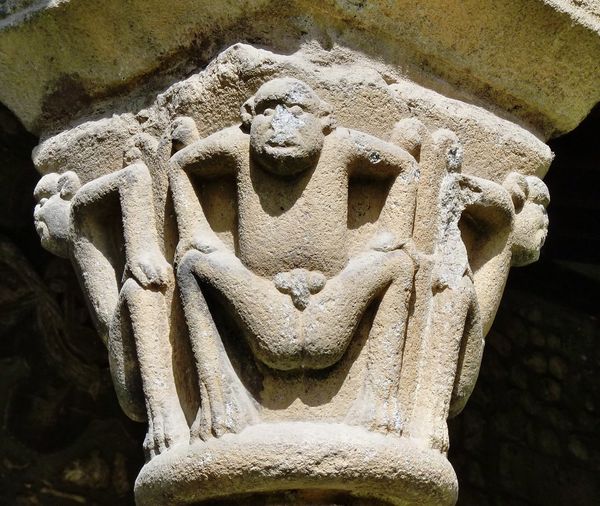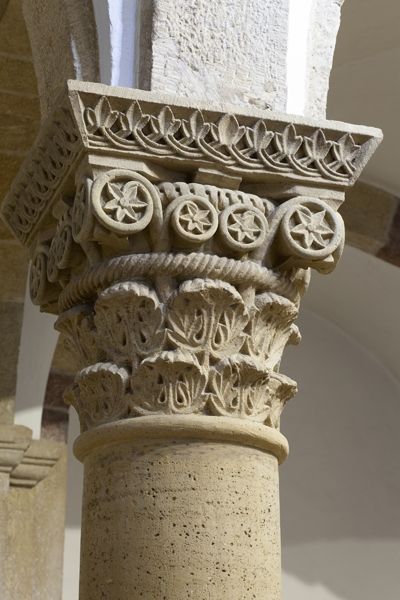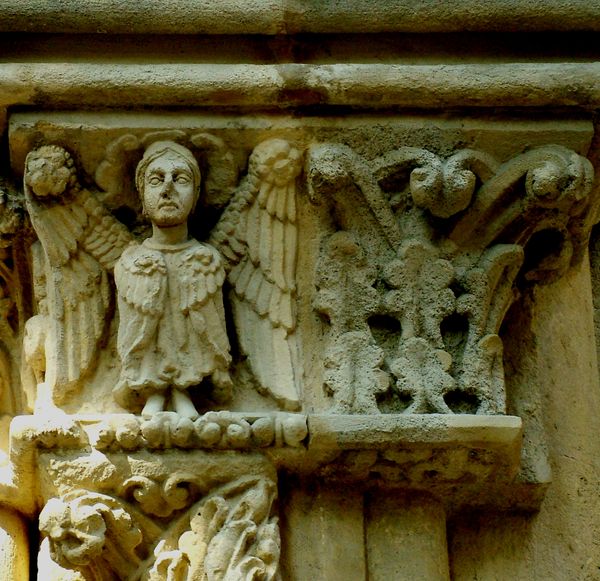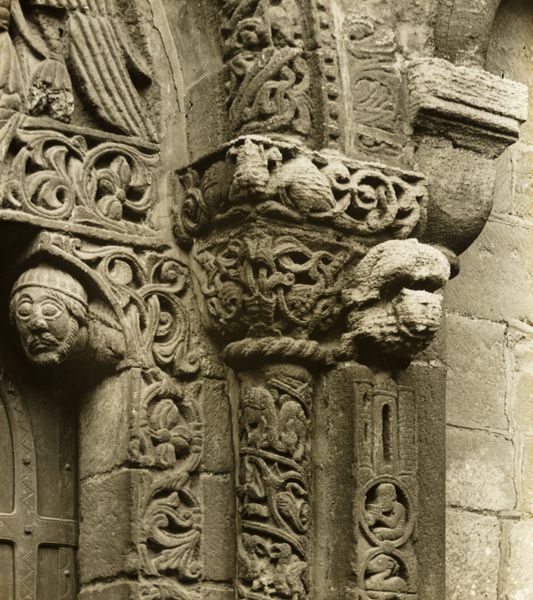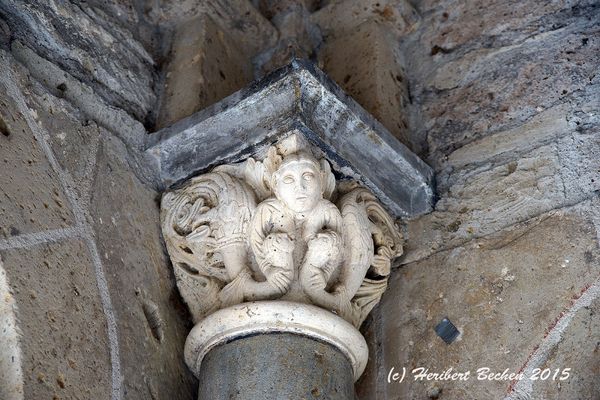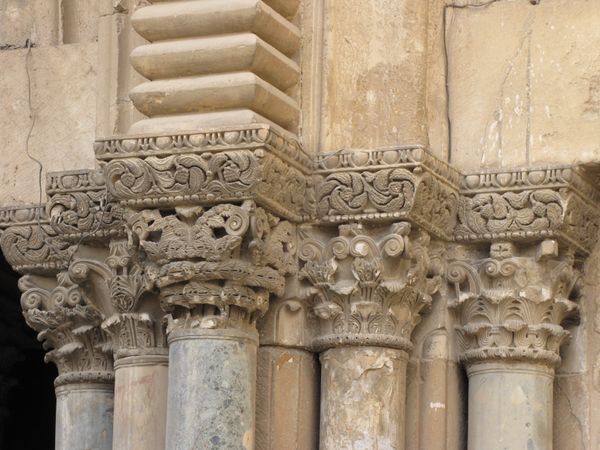
carving, relief, sculpture, architecture
#
public art
#
medieval
#
carving
#
sculpture
#
relief
#
figuration
#
historic architecture
#
traditional architecture
#
romanesque
#
column
#
sculpture
#
architecture
Copyright: Public domain
Editor: Here we have a Romanesque capital from the Abbey of Sant'Antimo in Italy, dating back to 1050. It’s a stone carving, a relief sculpture. The scene feels quite chaotic, with figures and animals intertwined. What exactly are we looking at here? Curator: Indeed. Considering its place within the Abbey, think about this not just as decoration, but as visual theology, designed to shape the understanding of the monks and visitors. We see figuration, so consider: what narratives, what lessons might the Church be communicating through these forms? What stories, both biblical and local, were central to this community at that time? Editor: So the figures could be illustrating a specific story? I noticed there appear to be lions, and some human figures with raised hands. Could this be a Daniel in the Lions' Den scene? Curator: Possibly! Consider how a familiar story like that, rendered in stone and prominently placed, reinforced religious power. How does its presence shape the experience within the Abbey? Public art served to both educate and inspire loyalty. What impact would repetitive exposure to such imagery have? Editor: I hadn’t really thought about the repetitive exposure aspect. It becomes more than just art, it’s almost propaganda. What else should we look for when considering its public role? Curator: Think about the choice of materials, the skill of the artisan, the placement within the architectural design – each aspect speaks to the investment, both financial and ideological, that the Church poured into creating its image. Editor: This gives me a lot to think about when viewing Romanesque art. It's a far cry from just pretty decoration! Curator: Precisely! The politics of imagery, particularly in the medieval period, dictated so much of public life and how people understood their place within the world. It is fascinating to consider the intersection of art, power, and belief.
Comments
No comments
Be the first to comment and join the conversation on the ultimate creative platform.
